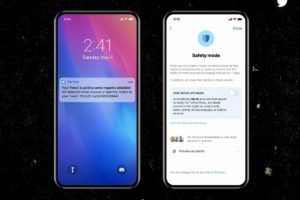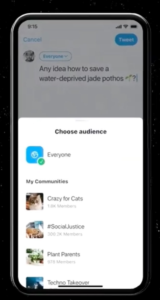At their analyst event yesterday, Twitter gave us the first look at some of the features that will be included in their paid subscription service. These included Super Follow, Safety Mode and Communities. Our team took a look at the potential for these features to affect the user experience as well as how brands might operate on Twitter.
Super Follow appears to offer the most value for independent content creators and personalities, allowing them to charge followers for access to tweets, newsletters, communities and badges. This gives these individuals an excellent alternative to using other sources like Patreon to monetize their content, instead allowing them to monetize it directly from the Twitter platform. For most brands, much of this this won’t be useful, as they’d prefer to share their content as widely as possible to engage with the most people, and aren’t looking to collect subscription revenue from their followers – though the ability for brands to award badges freely to engaged and loyal followers might have some potential if implemented.

Safety Mode promises a Twitter experience free from trolls, as a response to much of the criticism Twitter has received related to highly toxic anonymous users on its platform. One aspect of it has some potential for brands, as it appears to include sentiment monitoring for negative responses to your content. While this shouldn’t replace a full social media monitoring strategy, it could potentially supplement one.
The feature also includes the ability to automatically block and mute people who use language that is deemed to be “insults, name-calling, strong language, or hateful remarks.” This could raise censorship concerns depending on how it is implemented, but will definitely add value for content creators who spend a large portion of their time blocking personal attacks. Some brands may find this feature appealing, though much will depend on its implementation – from a customer service perspective, blocking users should be an absolute last resort for brands, and many frustrated customers may use variations on “strong language” that should not be ignored and merit a response rather than a block.
 Finally, Twitter announced a Communities feature, which allows users to interact based on common interest (think of Facebook Groups). This gives users a new way to share with segments of the Twittersphere rather than their broad audience – useful when not all of your followers will share the specific interest.
Finally, Twitter announced a Communities feature, which allows users to interact based on common interest (think of Facebook Groups). This gives users a new way to share with segments of the Twittersphere rather than their broad audience – useful when not all of your followers will share the specific interest.
Brands may find these communities interesting and useful to monitor for mentions or for general market trends, but should tread carefully when it comes to engaging in them – participation in any group should be done in a way that isn’t spammy and shouldn’t be intrusive to groups that aren’t expecting brand content or product placement.
If the feature is implemented in a way that enables brands to create their own communities, these could become an interesting way to offer exclusive content, product drops or special offers to loyal community members, or to gather customer feedback.
In all, Twitter’s recently announced efforts to monetize their platform are more targeted toward independent content creators and end users than they are to brands, but brands may find value in a few elements. If you’re a social media account manager, do you think you’ll find value in these features? What additional features would you like to see the platform implement that would make your life easier?